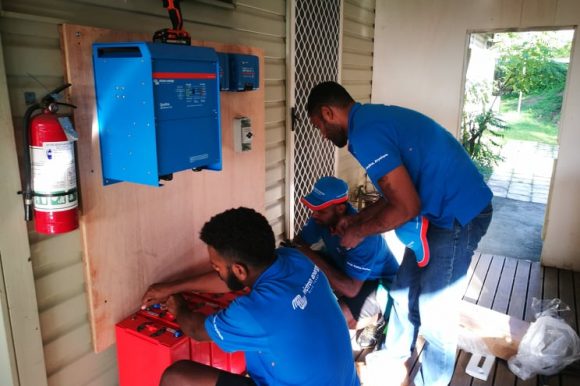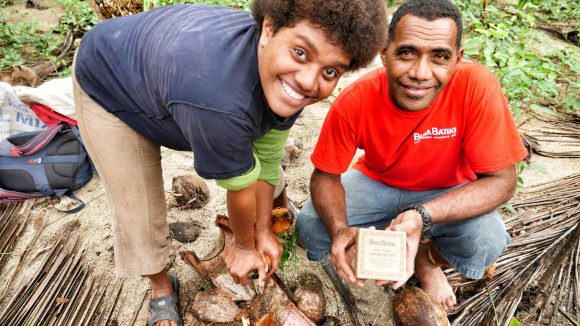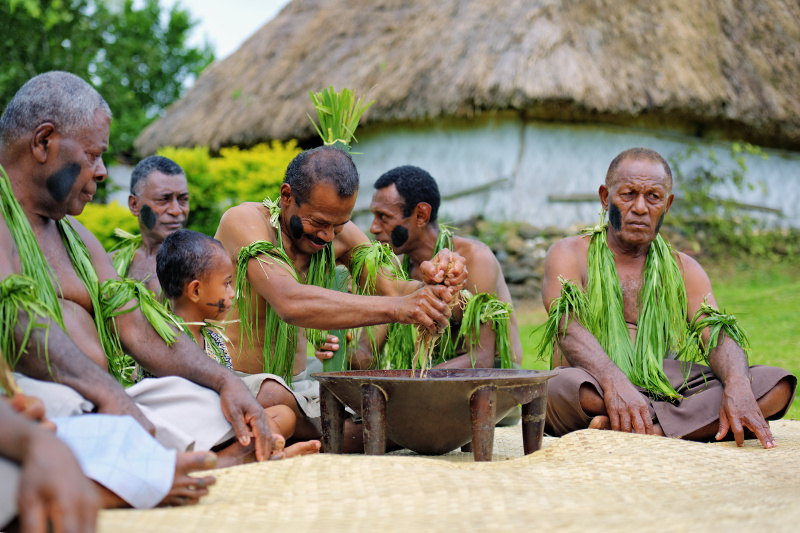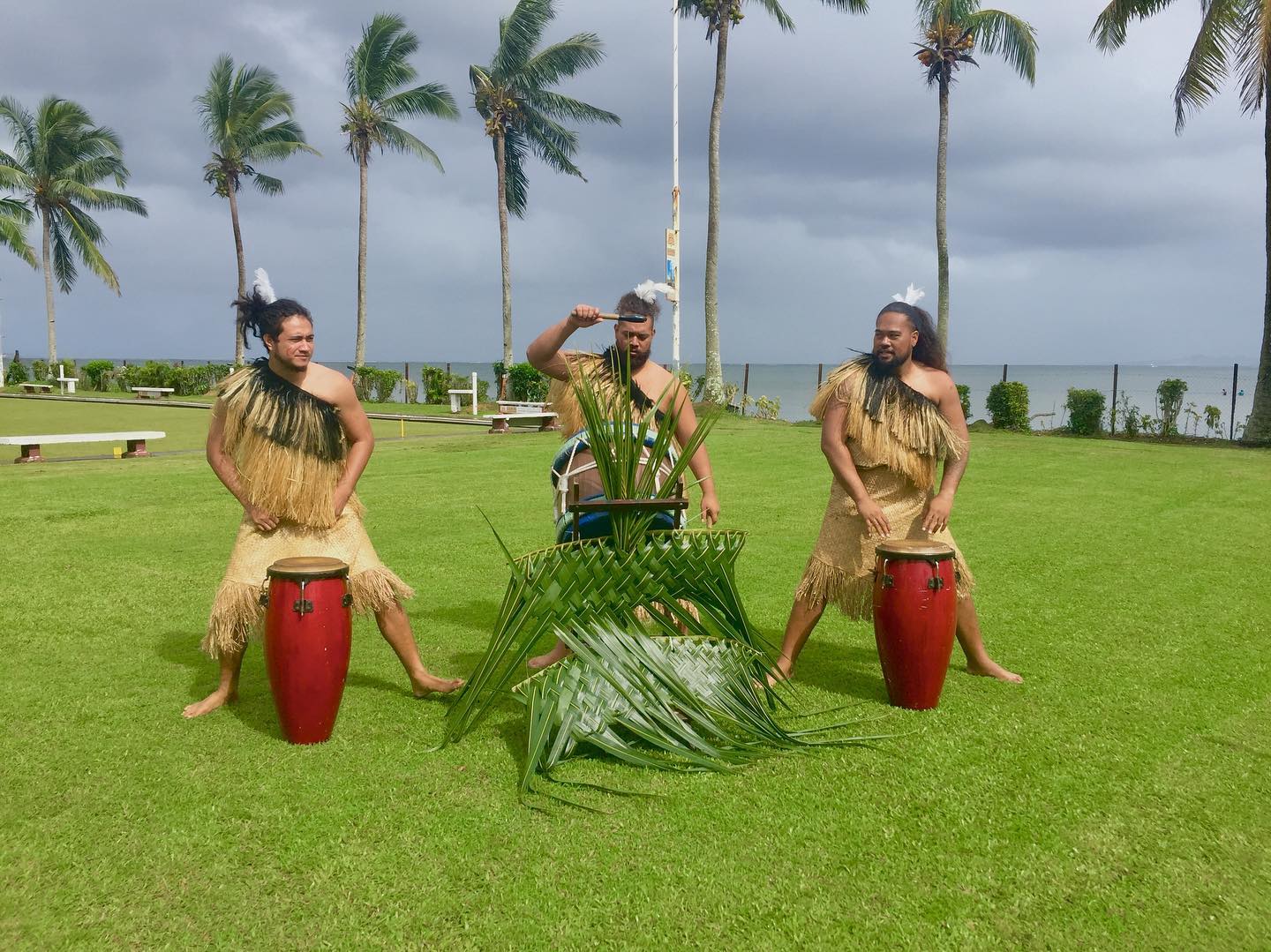Engineering

- Module 1 – An Introduction to Engineering in Fiji
- Relevant SDGs, FNDP and SDG Review.
- Module 2 – The Global Climate Problem and Cyclones in Fiji
- Fiji’s fight against climate change and infrastructure on the islands.
- Module 3 – Health & Sanitation in Rural Areas
- Sanitation, water, waste and future solutions.
- Module 4 – Farming & Bussiness
- Sustainable income, business & traditional society.
Module 1: An Introduction to Engineering in Fiji
This module will provide an overview of Fiji’s approach to development and the impact this has on the approach towards engineering. As you will be aware, Fiji’s National Development Plan (FNDP) is the country’s agenda for growth and development across all sectors of development. The plan supports the goals laid out in the UN Sustainable Development Goals (SDGs) and offers innovative and progressive solutions to some of the challenges Fiji faces. To first have an understanding for Fiji’s vision for growth will help as the modules progress and we begin to explore more specifics of Fiji’s development.

Engineering provides so much to Fijians on a day-to-day basis. Pacific Islanders are known for having incredible relationships with the land, being able to carve canoes capable of travelling the entire width of the Pacific Ocean. Also within these modules, you also will learn the important role that engineering has to Fijians, and how innovation and adaptation will ensure the very survival of the Pacific nations as climate challenges continue.
Fiji’s Prime Minister, Frank Bainimarama, notes that sustainable development is a “global team effort”. This effort and commitment will be needed to shift the global economy onto a sustainable pathway.
Prime Minister and COP23 President, Hon. Frank Bainimarama officially launched Fiji’s 5-year and 20-year National development plan in November 2017.
The development plan aims to end all poverty, fight inequality, tackle climate change, and leave no one behind no matter where they live globally. This can be achieved through global collective action and through well-managed development programmes in Fiji. This will lead to not only meeting the development plan and SDGs, but also the Paris agreement.
Thought Task: From these speeches, what initiatives and targets do you think you might be most interested in exploring further?
Here are the key UN Sustainable Development Goals for Engineering. Consider how your work will be able to contribute towards these global goals, and start to anticipate any challenges that you may come up against…
Engineering is vital to create innovate solutions to prevent the impact of climate change.

Building more resilient home and shelters will mean that more lives will be saved and fewer people will become injured or dispossessed during natural disasters. Communities are currently stuck in a cycle of being devastated by a disaster, rebuilding as quickly andBuilding more resilient home and shelters will mean that more lives will be saved and fewer people will become injured or dispossessed during natural disasters. Communities are currently stuck in a cycle of being devastated by a disaster, rebuilding as quickly and cheaply as possible, only to have their house destroyed by the next storm. Through intelligent design, we want to change this and create a housing system that works. cheaply as possible, only to have their house destroyed by the next storm. Through intelligent design, we want to change this and create a housing system that works.

Through innovative engineering we will be able to better look after our planet. Whether that is through building sea walls to protect land, creating less polluting methods of transport or engineering alternative products that reduce our reliance on fish, there are many ways that the world can be protected and changed for the better.

Money isn’t a trivial matter when it comes to climate change and engineering – increased wealth can have huge implications in terms of safety. If individuals and governments can invest in better protection for communities prior to natural disasters or sea level rise, for example, more money can then be channelled into other valuable aims, such as education – which in turn can further the development of the next generation of innovators and leaders. Prevention really is better than cure!



Throughout the following modules you will be learning about Fijian buildings, modes of transport, infrastructure, environment, as well as learning about Fijian people themselves. Developing knowledge in each of these areas creates context for human centred design engineering solutions. For example, what may be defined as adequate housing for a Fijian living in a city may not be the same as for a Fijian living in a village, because each have different needs based on their context.
Further to this, we, along with our partners, have identified various projects and challenges for you to take on after completing these modules. We aim to push you out of your comfort zone whilst supporting you in order to create hugely valuable and meaningful work that could be implement in Fiji.

In every traditional Fijian village, there were many different types of dwellings depending on the occupants and their purposes or functions. The ‘burekalou’ (priest-house) was the tallest building in any village. It has a high yavu (foundation) and a very tall roof. The belief was that the taller the roof, the closer they are to God. Next to the burekalou is the ‘Vale Levu’ (translated as the Big House), which belonged to the Turaga (chief). It is often a large dwelling with intricate decorations both on the exterior and interior part of the house.

Inside a bure, there is often a large open space where everyone eats and sleeps. ‘Modern’ Fijian houses are still built with the same interior design (large open spaces), although there may be a curtain/wall separating the beds at the end in order to increase privacy.
Listen to Te Tavodi discuss traditional Fijian houses and their unique engineering styles, as well as their challenges which have led to fewer being built in recent years.

The Fijian Drua canoes were some of the most widely admired forms of Fijian engineering.
When Europeans first arrived in the Pacific, they were amazed at how advanced the voyagers and navigators were. During Captain Cook’s explorations around the Pacific, he was guided by a Tahitian navigator who was able to determine their location based purely on the stars. Polynesians were particularly famous for their voyages, travelling all the way from Hawaii to Tonga using their incredible skill. Fijians were also well-known for their ability to travel from island to island using the power of wind. Whilst these techniques are still known to some, it is rare to find experts on this subject throughout the Pacific today. Nevertheless, there is hope that this knowledge may become more widely known, as Lulu explains below.
(Picture: Horsburgh, John, Public domain, via Wikimedia Commons)
As a result of fuel shortages and lockdowns across Fiji, people from Moturiki Island were unable to get fuel for their boats, limiting transport. However, as Lulu explains in the video below, this was an incredible opportunity to reignite an amazing tradition.
Module 2: The Global Climate Problem and Cyclones in Fiji

Both Fiji’s urban and rural areas require adaptation in order to thrive through the changing climate. After disasters, huge amounts of money are spent repairing the damage and rebuilding lives. With the populations increasing and the ever increasing value of goods, these costs will not decrease unless we think creatively. If we are able to create better infrastructure prior to disasters, we could then be able to increase funding towards other national projects, such as education. In order to minimise financial impacts after disasters, Fiji have developed a 10-year plan worth $4.5m USD in an attempt to provide adequate infrastructure capable of minimising climate impact.
Timoci Ravaga tells his story of the events he faced during Cyclone Winston in 2016 and the impact the storm had on houses in his village.
Cyclone Winston was the biggest cyclone ever recorded in the Southern Hemisphere, and swept through Fiji in February 2016.
Was the total amount of damage caused.
Sadly lost their lives.
People were significantly impacted by Cyclone Winston.
After Cyclone Winston hit Fiji in 2016, Think Pacific coordinated a relief mission to provide vital resources throughout remote areas in Fiji. As part of this effort, Think Pacific partnered with Rotary Fiji to donate clothing to Koro Island, one of the worst hit communities. Watch our documentary to learn more and to hear stories from those affected by this devastating storm.
Launched at the COP23 Climate event, this document was produced in partnership with the World Bank and the Global Facility for Disaster Reduction and Recovery (GFDRR).
Families from the remote parts of Fiji have faced a difficult decision in recent years – should they remain in their village and live a more traditional life, or move to the ‘developed’ areas where there may be more opportunity for employment and education for their children.
Watch this video to learn how the government plan to assist people living in slums throughout Fiji.
Thought: Will development of infrastructure and education in the remote areas prevent mass migration to the cities?
Remote communities often get stuck in the following cycle: 1) A disaster hits and destroys homes. 2) Homes are rebuilt as quickly and cheaply as possible (although this still uses all if not most of owners savings). 3) Disaster hits again and houses are destroyed as they couldn’t afford to build to correct standard.
In order to try and break this cycle, some have suggested relocating villages. Whilst this may work in some situations, it may not work for all. Post Cyclone Winston, Naigani village discussed the possibility relocating. Their challenges can be seen in this video.
The Pacific Way team travel around the Country looking at squatters and poverty in Fiji. This story seeks to demystify the reason why there are so many squatters in Fiji today and analyses government efforts to reduce their numbers.
The Fiji Ministry of Housing have put together housing plans, free for all Fijian Citizens. The hope is that these plans will allow communities to build back stronger so the same issues aren’t faced during future disasters.
Start to identify any changes you would make that would reduce cost or improve safety.
Fiji’s infrastructure is mostly situated in coastal and floodplain areas, making it vulnerable to many hazards such as sea level rise, salt intrusion, tidal surges, flooding and coastal erosion.

Fiji’s infrastructure is highly vulnerable due to insufficient maintenance, naturally exposed to environmental and climate hazards, and is vulnerable to climate change because the frequency and severity of environmental and climate hazards is expected to increase (World Bank, 2000; IGCI, 2000; GoF, 2017).
According to the ‘Post-Disaster Needs Assessment’ for Tropical Cyclone Winston, damage and losses to infrastructure was estimated at FJD 248.6 million (GoF, 2016). When infrastructure assets are replaced it is paramount it is done in a way which ensures resilience to environmental and climate hazards to ensure both vulnerability is reduced and natural exposure is not intensified (World Bank, 2000).

Water infrastructure is a critical concern, as water is an input into: agriculture, industry, electricity generation, sanitation, and human consumption. Current infrastructure will be vulnerable to environmental and climate hazards and changing precipitation levels. This vulnerability will be experienced differently across the country and will be especially high in small islands (GoF, 2017).
Climate change will restrict the number and efficacy of future possible adaptation measures for infrastructure. For instance, sea level rise will raise water tables, consequently affecting in-ground septic and sewer pumping systems; and groundwater will be contaminated by salt water intrusion restricting potential future usage (IGCI, 2000).
Natural disasters cause huge damage to roads. Consequently, these roads need repairing at the same time the nation is in need of immediate aid. As a result, lower-budget allocations may be given to all sectors and therefore the roads may not be repaired to a permanent standard, resulting in them being damaged again following the next disaster. These repairs get more expensive to repair each time due to inflation, which therefore puts pressure on Fiji’s government and the requirement to increase national debt to try and get out of this cycle.
The impact that quality roads can have can be seen in this video, which have been built with support from the Asian Development Bank.
This is the FRA's 2013 plan outlining the plan to develop Fiji's roads.
Challenges and Strategies as a Small Island Developing State.
Module 3: Health & Sanitation in Rural Areas

Since 1990, over 2 billion people now have improved access to drinking water, with 116 countries having met their MDG target for water. Almost 2 billion people also gained access to improved sanitation and 77 countries have met the MDG target. More than half the world’s population, almost 4 billion people, now enjoy the highest level of water access: a piped water connection at their homes. But much remains to be done. More than 700 million people still lack ready access to improved sources of drinking water; nearly half are in sub-Saharan Africa. More than one third of the global population – some 2.5 billion people do not use an improved sanitation facility, and of these 1 billion people still practice open defecation.
Access to improved sanitation facilities can have a huge impact on the lives of people all around the world. Nevertheless, some people in remote Fiji are forced to practice open defecation due to lack of sanitation facilities, which can lead to an increase in the spread of disease.
Goal 6 of the UN Sustainability Goals is to have access to ‘ensure availability and sustainable management of water and sanitation for all’.
This video provides an insight into these challenges, and also what Fijian Ministries and NGOs are trialling in order to improve access to sanitation facilities throughout the remote areas of Fiji.
Watch this video to hear from one of Fiji’s teachers about their WASH program in school.

‘Although translucent aqua waters gleam in the minds of tourists, Fijians do not always picture it as a resource let alone a source of leisure.’

‘Monash University is helping every informal settlement in Suva to access a toilet.’

‘Local research identifies sanitation facilities as the major source of Salmonella Typhi in Fiji.’
Let’s take a deeper look into Fiji’s water… Although famous throughout the world for its pure water, 1 in 10 people in Fiji do not have access to safe drinking water. With many rural parts of Fiji consisting of low lying islands with limited infrastructure and means of income, the collection of rainwater and other surface waters are often used as the primary source of water. Through water tanks connected to homes and/or communal buildings, people are able to collect rainwater during periods of heavy rain. This is often a cleaner way of storing, rather than sourcing water from any nearby creeks that may be contaminated. However, many rural communities experience periods of drought, leaving them with limited access to clean water.
This video provides some insight into how Fiji’s water is marketed around the world, whilst showing the challenges that people in Fiji still face with regards to reliable access to clean water.
This video shows how villages in remote areas of Fiji deal with water and some of the challenges that they face in accessing it.
Thoughts to ponder:
Is clean water required for flushing toilets, or can brackish/sea water water be used? In addition, are there ways that toilets can be flushed without water?
For both rural and urban areas of Fiji, implementation of an effective waste management system proves a huge challenge. Less than 100 years ago, the remote islands of Fiji had very little waste. However, as Fiji has increased its plastic production, as well as imports, new management systems have to be created to deal with non-reusable waste. Currently, the majority of rural Fiji dig burn pits for their rubbish, which can be detrimental to both the health of the individuals and of the land.
Although people in Fiji have a very low per capita carbon footprint compared to many other countries around the world, an effective waste management system is required to ensure a safe future for all of the country. This was highlighted by Fiji’s Department of Environment as they stated that ‘open burning of waste has been identified as a major source of air pollution in rural communities as well as squatter settlements as they do not have a waste collection system that is available in the urban areas’.
A thought to ponder: What ways can waste be disposed of in a village environment? Can the waste be recycled locally and effectively?

‘Piles of rubbish is now a growing health concern for residents in the area’

‘The Environment Ministry can no longer afford to be spending over four-million dollars every three years for the stacking of waste materials at the Naboro Landfill’
Precious Plastics (One Army) have come up with a brilliant idea to turn plastic waste into valuable items. Through sorting, crushing, melting and moulding plastic, Precious Plastics have provided an open-source concept that allows someone to set up their own recycling centre.
Module 4: Farming & Business
After natural disasters, self-sufficient communities can find themselves without food. As a result, people can find themselves in desperate need of aid and/or having to buy food (which often sky rockets in price). The following module aims to give you an understanding of the challenges that farmers and families undergo in the rural areas.

‘At least USD 80 billion in crop and livestock production has been lost in developing countries over the past decade after disasters (FAO)’.
This highlights the importance of developing our food security in order to sustain life. Start to think about ways you can approach these challenges and ask yourself key questions. How can the impact be minimised? Can engineering solve any of these challenges? What would you do if you were living there?

When Tropical Cyclone Winston struck Abhishek Sapra’s farm exactly four years ago, the damage was monumental. Sapra suffered losses of over US$227,000 (The Guardian).
“The trees were stripped of all their leaves, a lot of heritage trees fell over, crops were almost completely wiped out,” says Sapra. “Unless it was underground it didn’t survive.”
As a result of constant natural disasters, farmers struggle to get insurance, preventing them from having any financial back-up during hard times. Consequently, some families have given up on their lives as farmers and have moved to the cities in search of alternate work.
'Damage to crops and livestock is estimated at USD 104 million, while damages to fisheries are also critical. With much of the country relying on subsistence production to meet their food needs, restoring agriculture and fishery-based livelihoods is essential to avoid dependency on food aid in the coming months'

In Fiji, the word ‘tabu’ (pronounced ‘tam-boo’) means ‘forbidden’. In Fijian culture, certain areas of land or oceans are marked as ‘tabu’ areas in order to allow that particular area to revive and return back to its natural state. With regards to fishing, certain areas of a village’s reef may become tabu for a certain period of time before the area is then moved.
Thoughts: Are current fishing operations this mindful of ocean revival?

‘Fiji’s tuna boat owners say Pacific nations must cut the number of licences they give to foreign fishing fleets if they want to save the local industry.’
This article states that ‘approximately 75% of the domestic fleet have ceased operation in the last five years, with most fleets being able to catch less than 50% of the amount of fish needed for those companies to break even’.
Aquaculture is being considered as way of allowing fish stocks to replenish in the ocean. The concept is through creating designated netted areas in the sea, or using concrete tanks on land, fish can be ‘farmed’ and the fish in the ocean can be left alone.
However, this idea has been criticised as the fish require large amounts of feeding – a lot of which comes from fish in the sea – and that if farmed fish escape the nets and travel to the ‘wild’, they may introduce disease and devastate native species.
Thoughts: Is it possible to have an effective aquaculture in a village, focused on providing food and replenishing reefs, rather than farming commercially?
If not, are there other methods of improving fish stocks and reefs that could be engineered?

In recent years, more people in remote village have started to purchase eggs from stores on the mainland and transporting these back to the islands. This allows a family to have access to quick meals and is something that children could take to school for packed lunch.
The question therefore is, why would people purchase eggs when there are often plenty of chickens in a village? Some reasons for this could be that chicken pens may be initially expensive to construct, making it hard to find the eggs of free-roaming chickens.
Question: Can chicken pens/chicken tractors be built in order to meet the egg requirements of the village? How can these be designed? How much money will it cost to keep the chickens fed etc?
Mangroves act as a natural sea wall, protecting water from rising up into farms, and create habitats for marine life to live. This is an example of natural engineering, where perhaps instead of encouraging the building of concrete sea walls, we could look at how to plant more mangroves to benefit both the marine life and the local community.
Take a look at this documentary on Netflix, highlighting the challenges that the world’s oceans and fish are currently facing.
Pigs are one of the most valued domestic animals in Fiji. In the past, pigs were raised by families as though they were a child. Nowadays, pigs are kept in pens and can provide food for special occasions, as well as being sold for a source of income.

Engineers challenge: Although pigs have huge value both spiritually and financially, taking adequate care of them can be difficult or expensive. As a consequence, pigs often escape and damage crops.
Thoughts: How can you design a pig pen that would be strong, affordable and used readily-available materials?

Biogas can be created from pig manure. This benefits communities in two ways. Firstly, it could provide a free source of fuel for the village for cooking, which is much cleaner than burning wood and having smoky kitchens. Secondly, depending on the quantity of gas, it could also provide an income for a village or individuals who then sell it.
Engineers challenge: Can you design a biogas system that can operate in a village? What things may you have to consider?

Life in the village offers an abundance of natural resources. From the fish in the sea to the crops on the land, remote communities have a great wealth of resources. If a community can successfully generate an income using their natural materials, people are not driven to the cities in search of work and can instead maintain their traditional culture. Having a greater income also gives people the ability to build stronger housing, educate their children, have better sanitation and better disaster protection.
The challenge for some communities is how to monetise this wealth of resources. What ideas can you come up with?

Fijians are known throughout their history for working together collectively. However, in recent times, there has been a movement by some to want to start their own business without interference from anyone else. These different attitudes can sometimes cause conflicts in rural areas.
Living so remote, what facilities can people access to develop value-added products? None, so people are forced into only ever being the people that supply raw products.
Even if they can build a designated building, it’s very difficult to know the building regulations required by various auditors to approve a facility to a sufficient standard to be approved by internationally recognised bodies which would then approve a product for export.
The Way Forward
Throughout the previous modules, you have learnt about the challenges that both rural and urban areas in Fiji face. This information, together with knowledge of traditional Fiji design and architecture, has hopefully got your mind working on concepts for how we can start to overcome these issues. We need to think creatively.
Next up, you’ll be choosing your project/challenge to be working on over the coming weeks. Best of luck – we can’t wait to see what you come up with!









